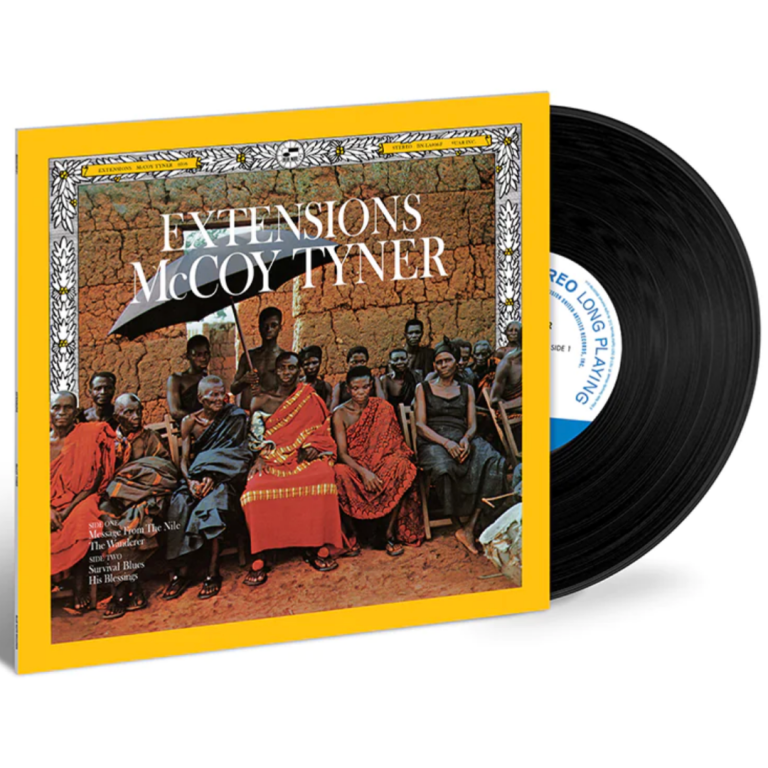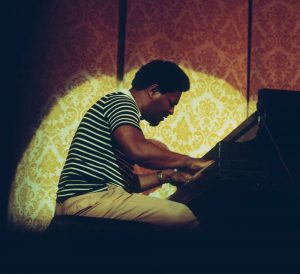“I recall when we first put the master up”, Harley recounts from Los Angeles, where he’s currently working in the studio. “That first track came on. McCoy, Ron and Elvin set it up and then Alice Coltrane comes in with her otherworldly beautiful harp on top of it all. I look over at [engineer] Kevin Gray and he has this ‘wow’ look and a big smile on his face. And we were off and running!”
When “Extensions” first got released in 1973, Harley was a young jazz fan hanging out at Slugs, a club on the Lower East Side. “Many of the giants of post-bop and modal jazz could be heard there week in and week out”, he remembers. “McCoy played there frequently, and I caught many of those shows. His bands would have that place practically levitating!”
Tyner had cut his teeth with the John Coltrane quartet, but by 1965, their music paths were diverging. Coltrane’s music became a lot more free and atonal, and Tyner didn’t see himself contributing to this new sound. As a bandleader, he recorded a run of albums for Blue Note, starting with “The Real McCoy’” in 1967 and ending with “Extensions”, recorded in 1970, but not released until three years later, for reasons that according to Harley likely had to do with the corporate changes that the label was going through at the time.

MCCOY TYNER Extensions
Available to purchase from our US store.In terms of the overall album theme, Tyner was exploring his African roots, just like many jazz musicians at that time, as the USA were transitioning into the post-civil rights movement era. Tyner wrapped those spiritual explorations of identity into a much more traditional musical guise than some of his peers who veered off into free jazz territories. “Extensions”, on the other hand, sticks to the modal framework.
“Extensions” came right after another Tyner album called “Expansions”, which had been released in 1969. “You can hear McCoy’s evolution in concept when you listen to both albums sequentially”, Harley believes. “It’s McCoy expanding, then extending!” While “Expansions” features slight touches of the 1960s avant-garde, like Ron Carter playing cello instead of his usual upright bass, on “Extensions” it seems like those elements were scaled back. And while Miles had his electric thing going on at the same time – ”In A Silent Way” was released in the same year as “Expansions”, while “Bitches Brew” came out in the same year that “Extensions” was recorded –, Tyner seemed to have his own distinctive vision, continuing on the path set out by the Coltrane quartet in the first half of the 1960s.

Fast forward half a century, and the music hasn’t lost any of its appeal. Harley calls it “a masterpiece of modal jazz”. Just looking at the lineup, everything about this record screams ‘classic’: McCoy, Gary Bartz, Wayne Shorter, Ron Carter, Elvin Jones. “Then you add the masterful harp of Alice Coltrane and the whole thing just becomes this spiritual, living, breathing thing”, Harley gushes. “She takes this incredible music to even loftier heights. None of what she plays feels tacked on in any way. She is an integral part of the proceedings, and you can hear the musicians taking inspiration from what she plays and responding in kind. It’s been so satisfying to see the incredible resurgence of interest and appreciation of her music over the last years. The musicians of that time knew of course, but sometimes it takes the public longer to catch up.”

MCCOY TYNER Extensions
Available to purchase from our US store.Stephan Kunze is a Berlin-based culture journalist who has been writing about music for magazines and newspapers since 2001. He’s a former Senior Music Editor and Global Editorial Lead at Spotify.
Header photo: McCoy Tyner at the Newport Jazz Festival, Carnegie Hall, New York City, 1976. Photo: David Redfern/Redferns.


